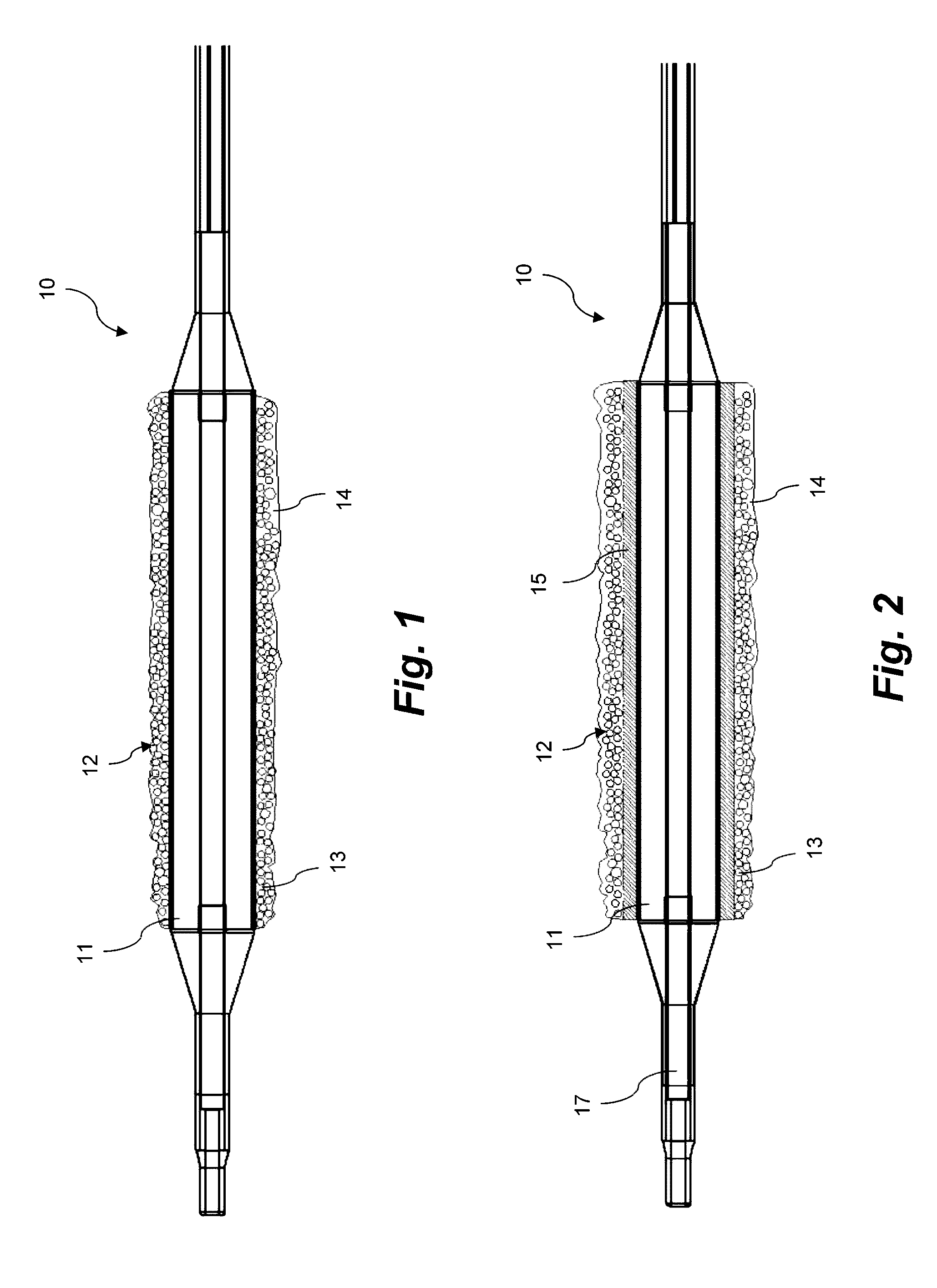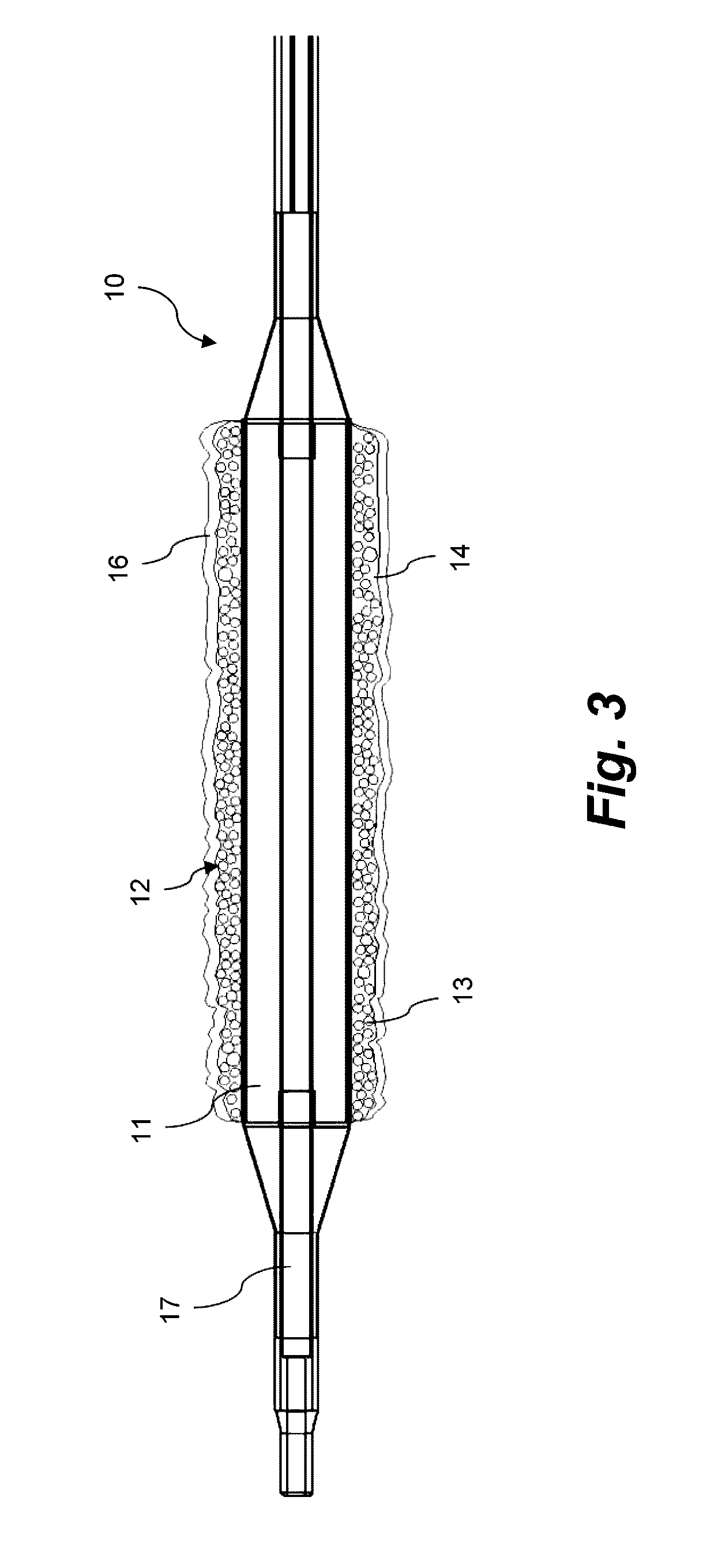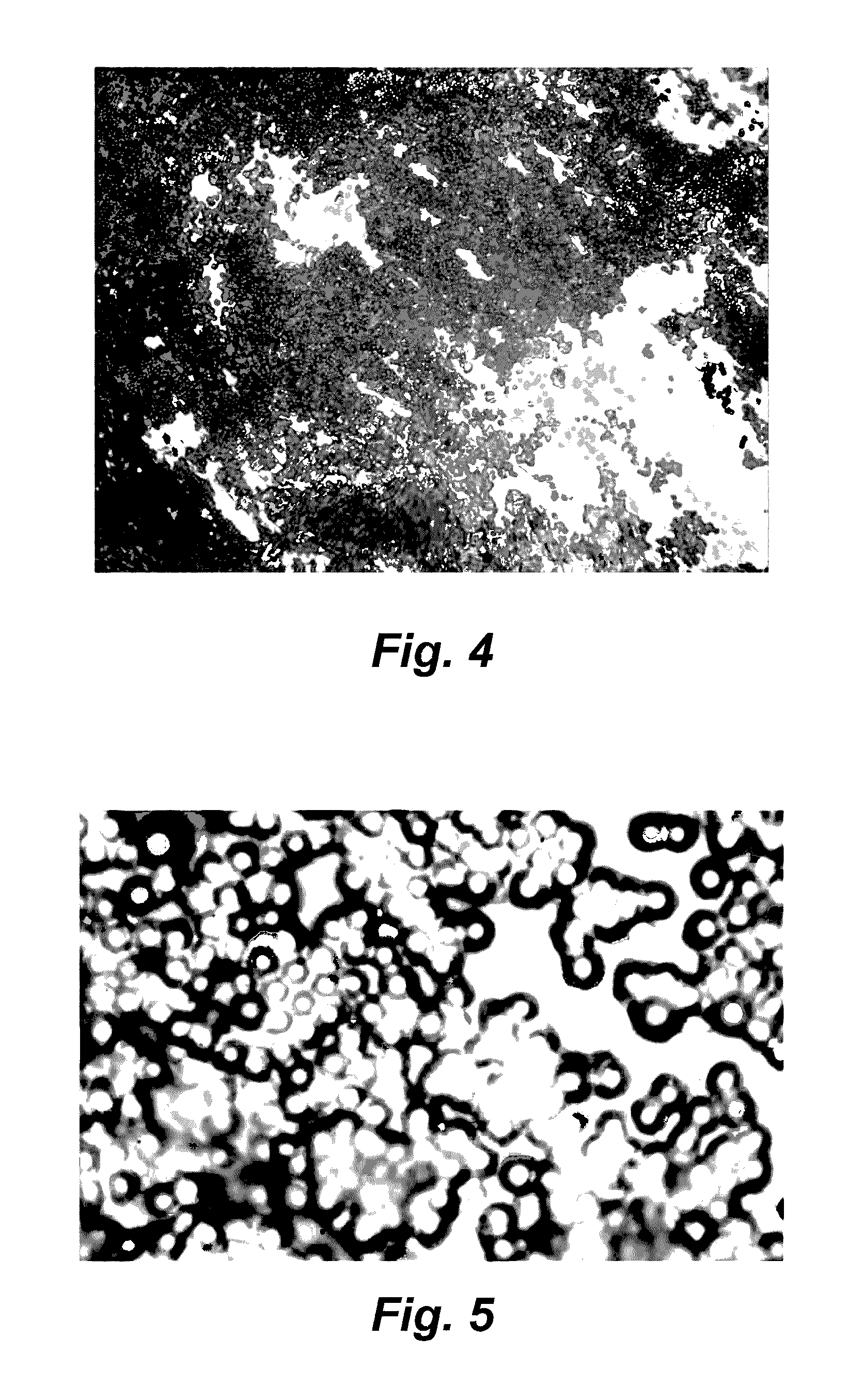Coating for intraluminal expandable catheter providing contact transfer of drug micro-reservoirs
a technology of expandable catheters and contact channels, which is applied in the direction of catheters, drug compositions, cardiovascular disorders, etc., can solve the problems of endothelial disruption, vessel damage, and dissection of vessel tunica media,
- Summary
- Abstract
- Description
- Claims
- Application Information
AI Technical Summary
Benefits of technology
Problems solved by technology
Method used
Image
Examples
example 1
[0057]Drug Containing Micro-Reservoirs (Microspheres) spheres) fabricated by coacervation of polylactic-co-glycolic acid copolymer incorporating sirolimus (rapamycin) were obtained.
[0058]Microsphere sample 1: 50% DL-lactide / 50% glycolide copolymer, average diameter 3.1 μm, SD 0.44 μm, 39% rapamycin by weight
[0059]Microsphere sample 2: 75% DL-lactide / 25% glycolide copolymer, average diameter 3.2 μm, SD 0.76 μm, 40% rapamycin by weight
[0060]Microsphere sample 3: 50% DL-lactide / 50% glycolide copolymer, average diameter 2.7 μm, SD 0.8 μm, 45% rapamycin by weight
[0061]Microsphere sample 4: 75% DL-lactide / 25% glycolide copolymer, average diameter 3.3 μm, SD 1.2 μm, 46% rapamycin by weight
[0062]Microsphere sample 5: 75% DL-lactide / 25% glycolide copolymer, average diameter 4.1 μm, SD 0.61 μm, 25% rapamycin by weight
[0063]Microsphere sample 6: 75% DL-lactide / 25% glycolide copolymer, average diameter 3.78 μm, SD 0.44 μm, 28.8% rapamycin by weight
[0064]Microsphere sample 7: 75% DL-lactide / 25% ...
example 2
Sustained Drug Release from Micro-Reservoirs Under Physiological Conditions
[0067]Micro-reservoirs from Example 1 were tested for sustained release of drug. Micro-reservoir samples of 2 to 5 mg weight were placed in 1.6 ml Eppendorf tubes with 1.2 ml of phosphate buffered saline (PBS) to simulate a physiological environment. After an initial wash to remove any drug not incorporated in the micro-reservoirs, the tubes were incubated at 37° C. with gentle mixing at 250 rpm. The PBS was sampled at time intervals and the released drug quantitated by reverse phase HPLC using a C18 column.
[0068]Micro-reservoirs were assayed for drug elution over 5 hours. The resultant drug release was fit to the Korsmeyer-Peppas kinetic equation for drug release from a polymer with dispersed drug. The results of the Korsmeyer-Peppas model are listed in Table 1.
[0069]
TABLE 1Korsmeyer-Peppas Modeling of 5 Hour Drug ReleaseMicrosphereMicrosphereMicrosphereMicrosphereQ = a * x{circumflex over ( )}b1234R (correl...
example 3
Formulations of Micro-Reservoirs in Coating Formulation of Cholesterol and Fatty Acid with PEG-Lipid
[0080]A coating formulation was prepared with 107 mg of stearic acid, 105 mg of cholesterol, and 50 mg of DPPE-mPEG350 mixed with 14 mL of heptane and heated to 60° C. such that a clear solution was obtained. The solution was then vortex mixed for 30 seconds and allowed to cool. Next, 200 mg of sirolimus loaded microspheres of sample #6 was added, and the formulation was placed in an ultrasonic bath for 4 minutes to disperse and suspend the microspheres. [Formulation 1023E]
[0081]A coating formulation was prepared with 58 mg of erucic acid, 43 mg of DC-Cholesterol, and 6.25 mg of DOPE-mPEG350 mixed with 7 mL of heptane and heated to 60° C. such that a clear solution was obtained. The solution was then vortex mixed for 30 seconds and allowed to cool. Next, 100 mg of sirolimus loaded microspheres of sample #8 was added, and the formulation was placed in an ultrasonic bath for 5 minutes t...
PUM
| Property | Measurement | Unit |
|---|---|---|
| diameter | aaaaa | aaaaa |
| inflation time | aaaaa | aaaaa |
| temperature | aaaaa | aaaaa |
Abstract
Description
Claims
Application Information
 Login to View More
Login to View More - R&D
- Intellectual Property
- Life Sciences
- Materials
- Tech Scout
- Unparalleled Data Quality
- Higher Quality Content
- 60% Fewer Hallucinations
Browse by: Latest US Patents, China's latest patents, Technical Efficacy Thesaurus, Application Domain, Technology Topic, Popular Technical Reports.
© 2025 PatSnap. All rights reserved.Legal|Privacy policy|Modern Slavery Act Transparency Statement|Sitemap|About US| Contact US: help@patsnap.com



